Nature has a way of showcasing stunning artistry, and some spiders are no exception. These arachnids, with their vibrant colors and intricate patterns, resemble miniature works of art. Whether you’re fascinated by spiders or simply appreciate their beauty, these colorful species are sure to catch your eye. Let’s explore a few spiders that look as though they belong in a gallery.
Peacock Spider (Maratus volans)
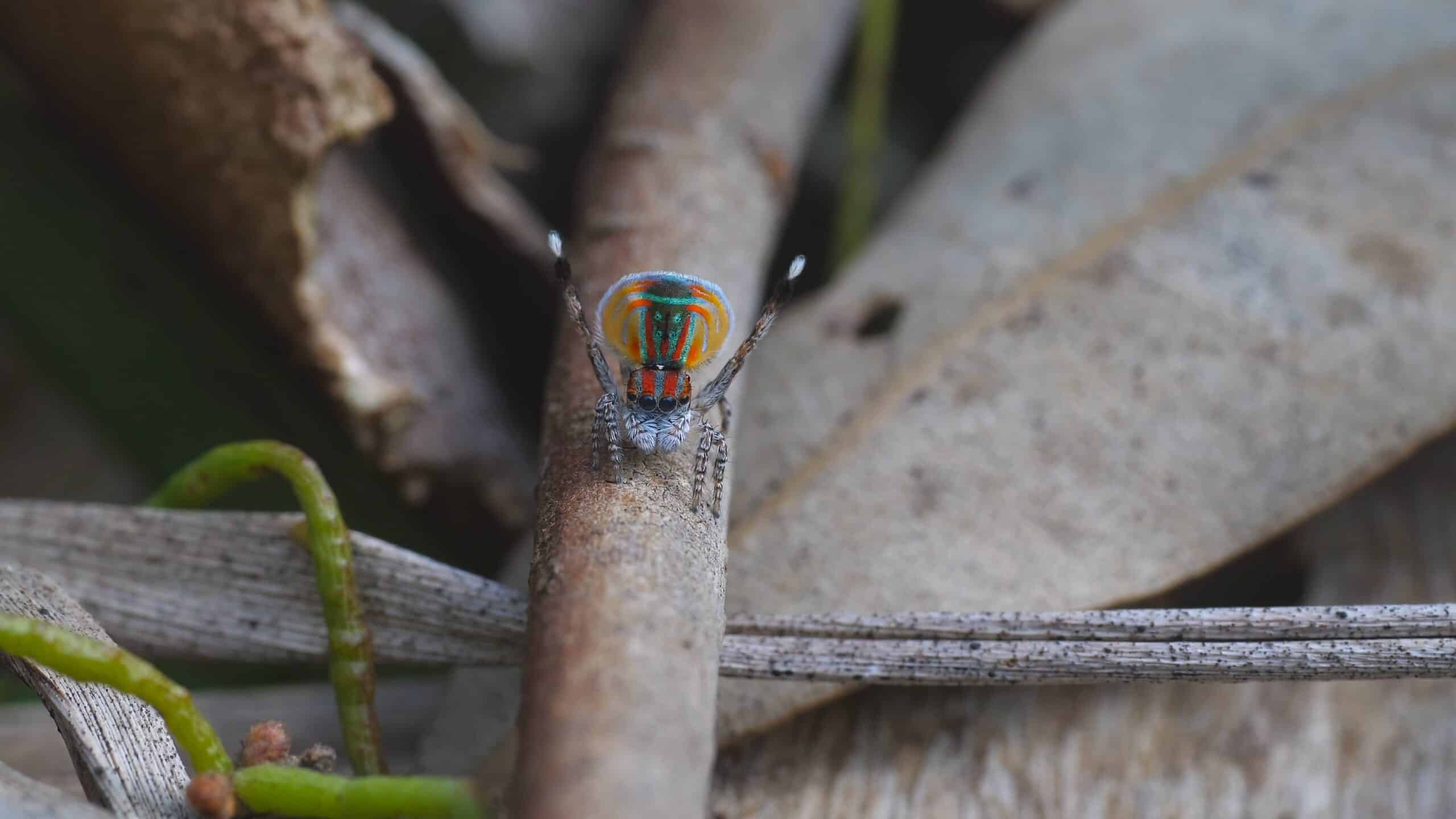
The Peacock Spider is famous for its vivid colors and incredible courtship dances. Males display iridescent blue, green, and orange markings on their abdomen. They raise and spread their abdomen like a peacock’s tail to impress potential mates. This display is paired with a rhythmic dance that includes leg waving and vibrations. Found in Australia, this tiny spider’s unique behavior and appearance make it a true marvel of nature.
Golden Orb Weaver (Nephila)
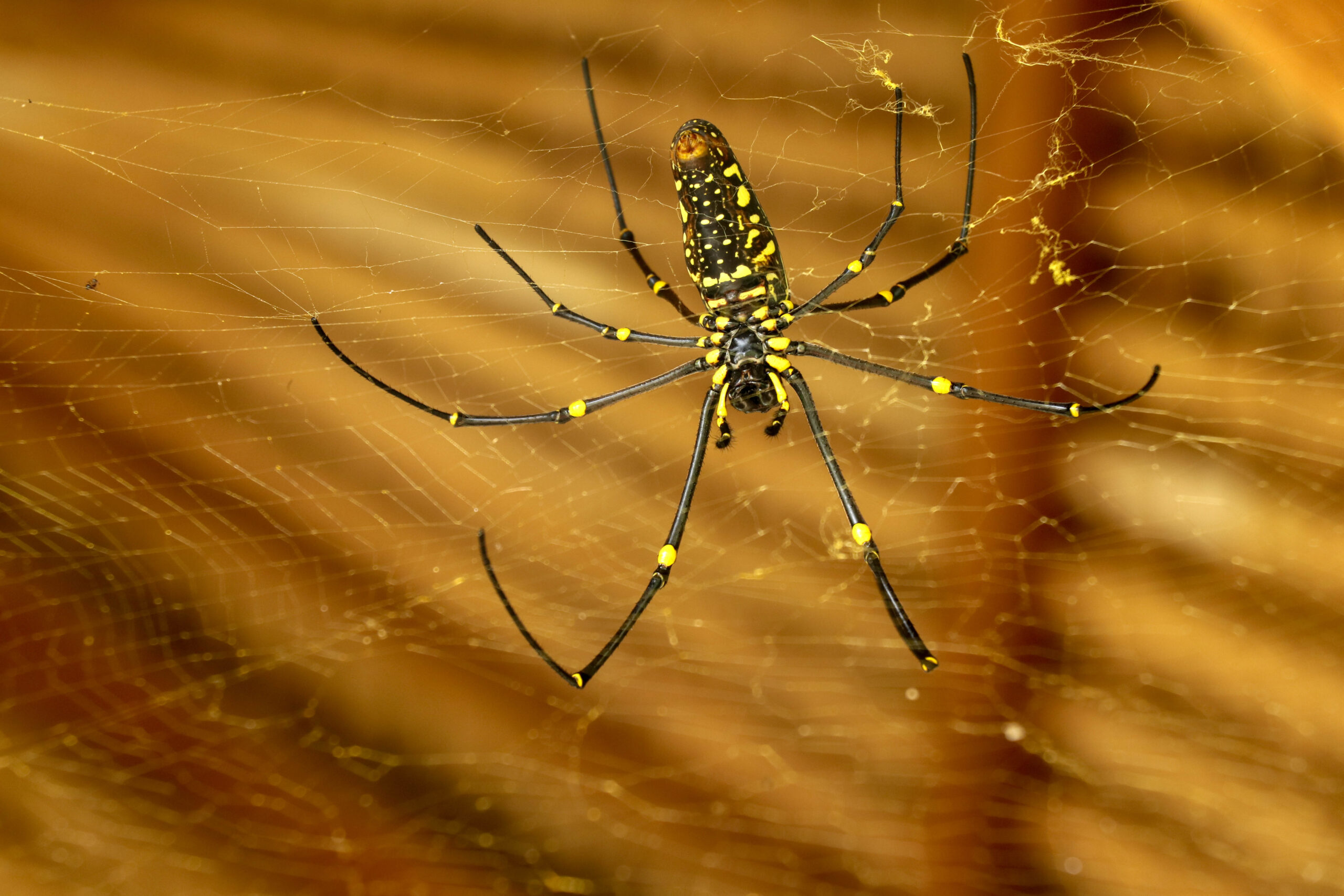
Golden Orb Weavers are known for spinning golden-colored silk webs that glisten in the sunlight. Their bodies are typically yellow and black, making them easy to spot. Females can grow up to five times larger than males, with a leg span that can reach several inches. These spiders use their large, strong webs to catch prey like insects and even small birds. They are commonly found in tropical regions around the world, creating breathtaking golden webs that stand out in nature.
Gooty Sapphire Ornamental Tarantula (Poecilotheria metallica)
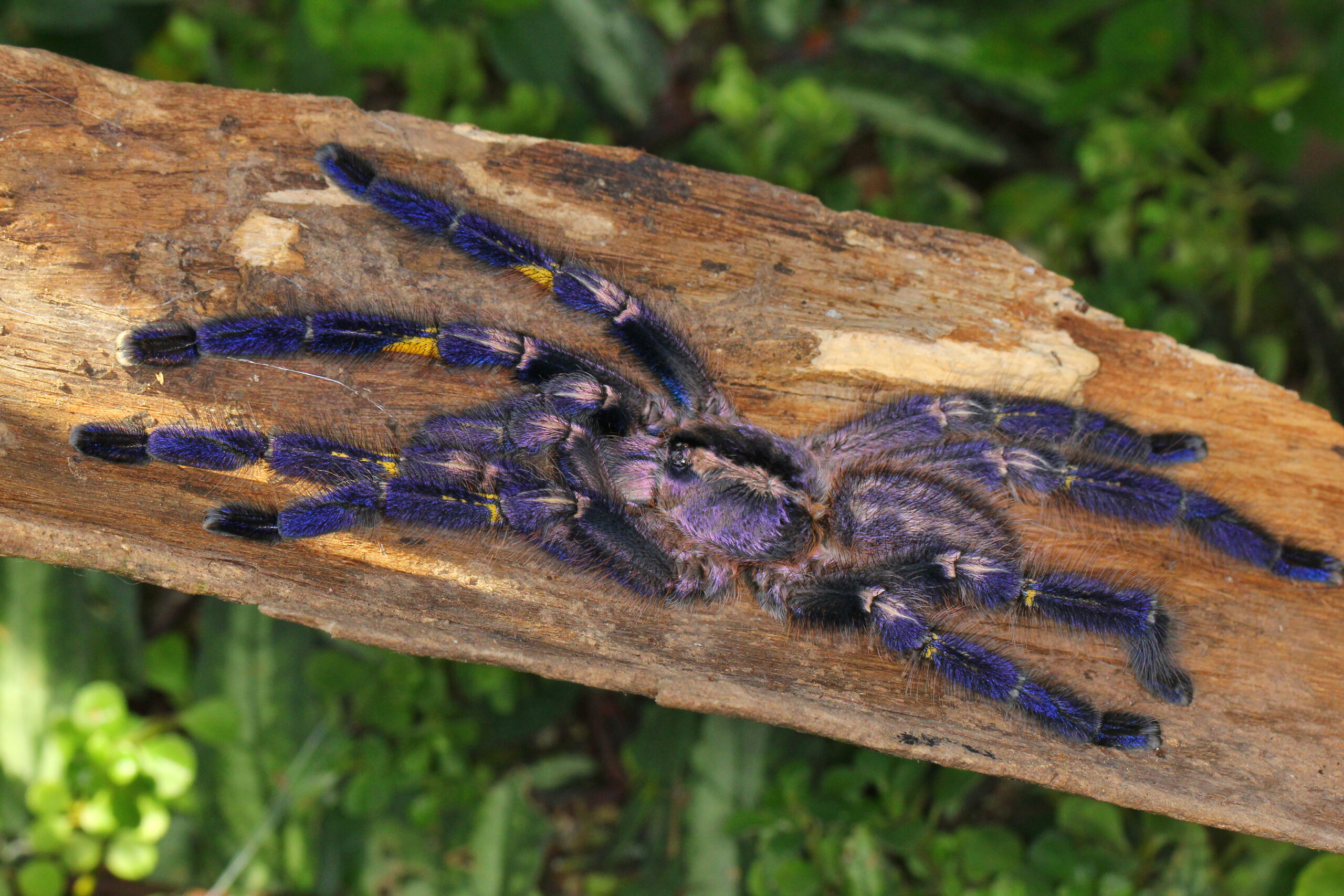
The Gooty Sapphire Ornamental Tarantula is a striking spider with vibrant blue hues covering its body and legs. Found in India, this species lives in tree holes in remote forests. Its electric blue coloration is unique among tarantulas and becomes even more vivid under bright light. The spider’s bold color contrasts with the yellow and white markings on its legs, making it one of the most visually stunning tarantulas.
Green Lynx Spider (Peucetia viridans)
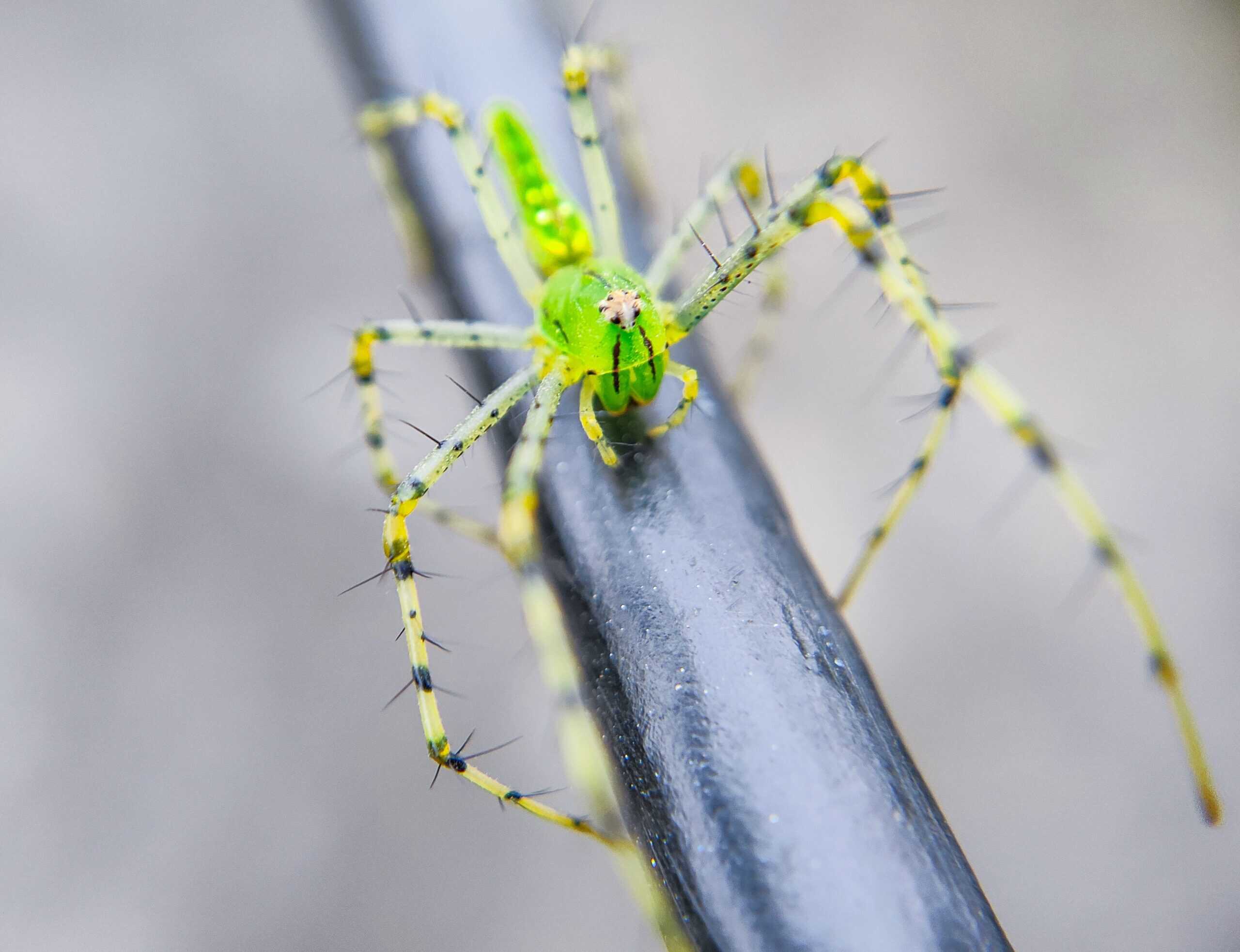
The Green Lynx Spider is easily recognizable by its bright green body and red markings on its face. This spider is primarily found in the southern United States and parts of Central America. It hunts insects on plants, often camouflaging itself among leaves. Its translucent green color allows it to blend seamlessly into its surroundings, making it a skilled predator despite its vivid appearance.
Red-Headed Mouse Spider (Missulena occatoria)
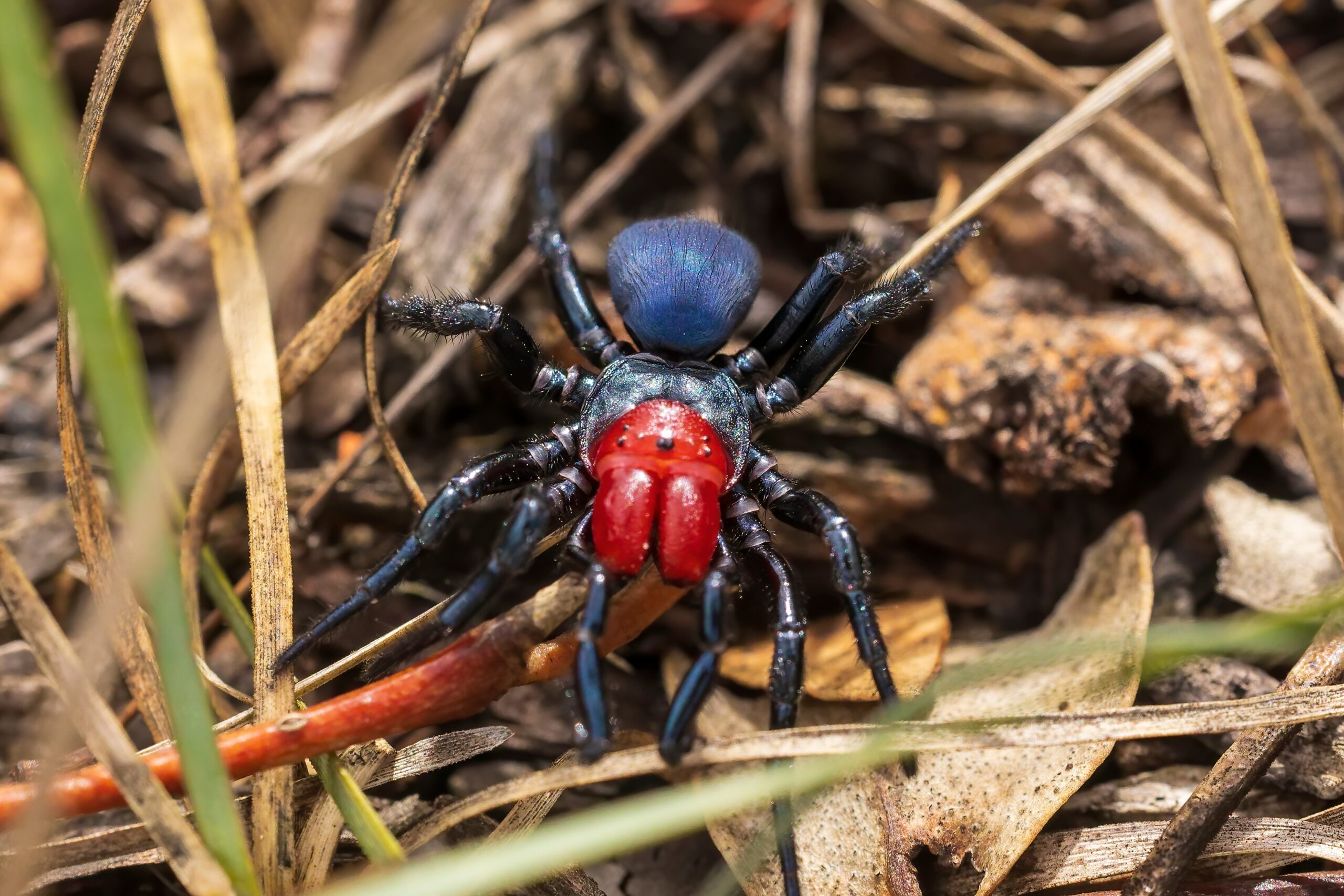
The Red-Headed Mouse Spider stands out due to its contrasting black body and bright red head. Found in Australia, this spider is often mistaken for more dangerous species like the Redback Spider. It digs burrows in the ground and waits to ambush passing prey. Despite its fearsome appearance, this spider is relatively docile unless provoked. Its vibrant red and black coloration warns off potential threats, signaling that it should not be disturbed.
Brazilian Jewel Tarantula (Typhochlaena seladonia)
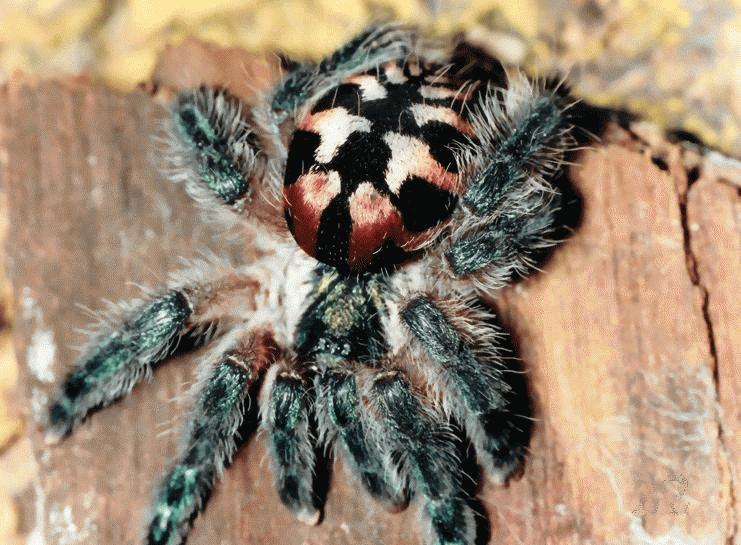
The Brazilian Jewel Tarantula lives up to its name with an array of dazzling colors. Its body is covered in metallic greens, golds, and blues, giving it the appearance of a living jewel. This small tarantula is native to the rainforests of Brazil, where it lives in hollowed-out trees. Its metallic sheen makes it one of the most coveted tarantulas among collectors. Its intricate patterns and glowing colors make it look almost unreal.
Redback Spider (Latrodectus hasselti)
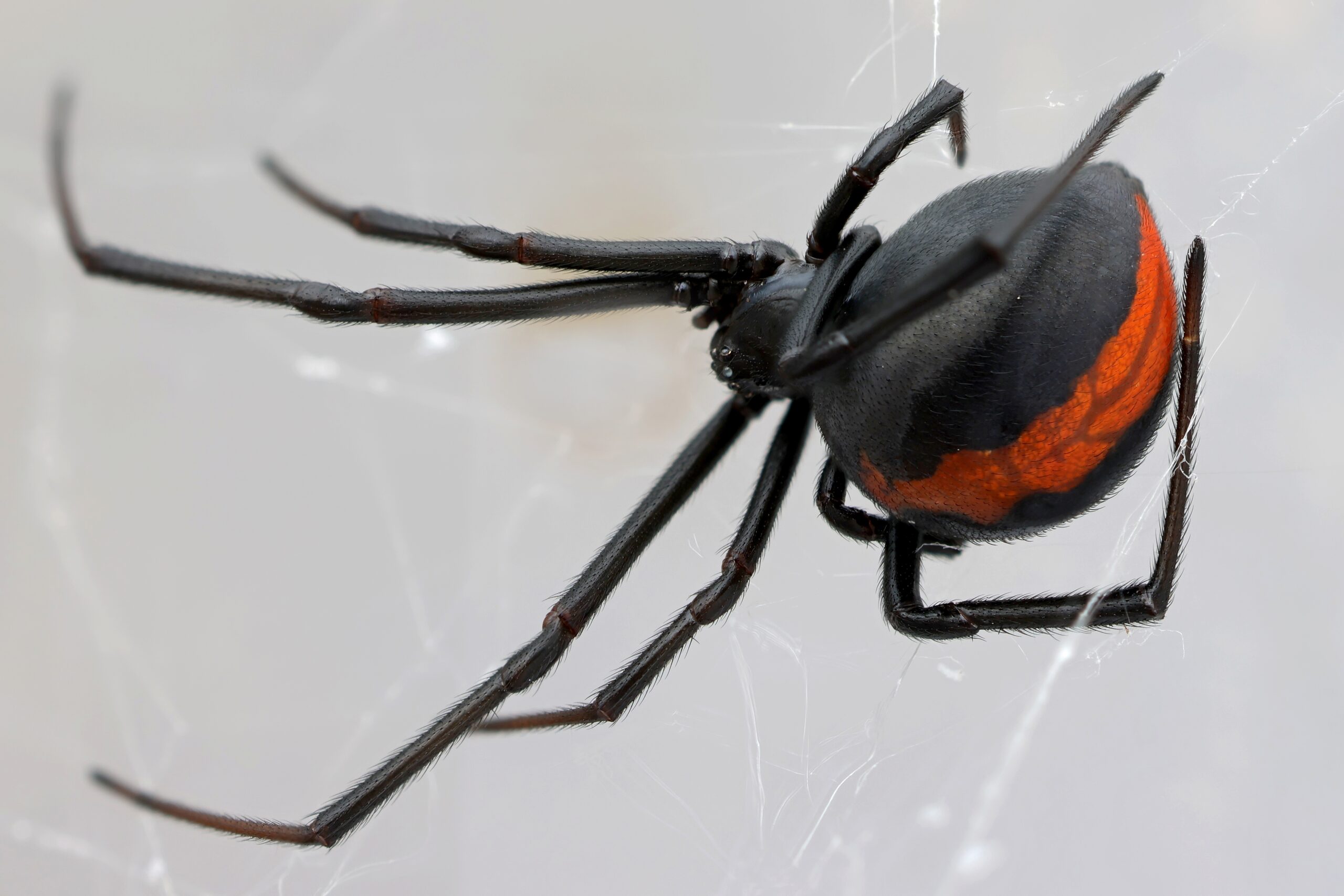
The Redback Spider is famous for the distinct red stripe running along its black body. Native to Australia, this species belongs to the widow family of spiders. Females are far more dangerous than males, delivering venomous bites that can cause significant pain. The spider’s striking red and black coloration serves as a warning to potential predators. Despite its small size, it’s one of the most well-known spiders due to its dangerous reputation and vivid appearance.
Ladybird Mimic Spider (Paraplectana)
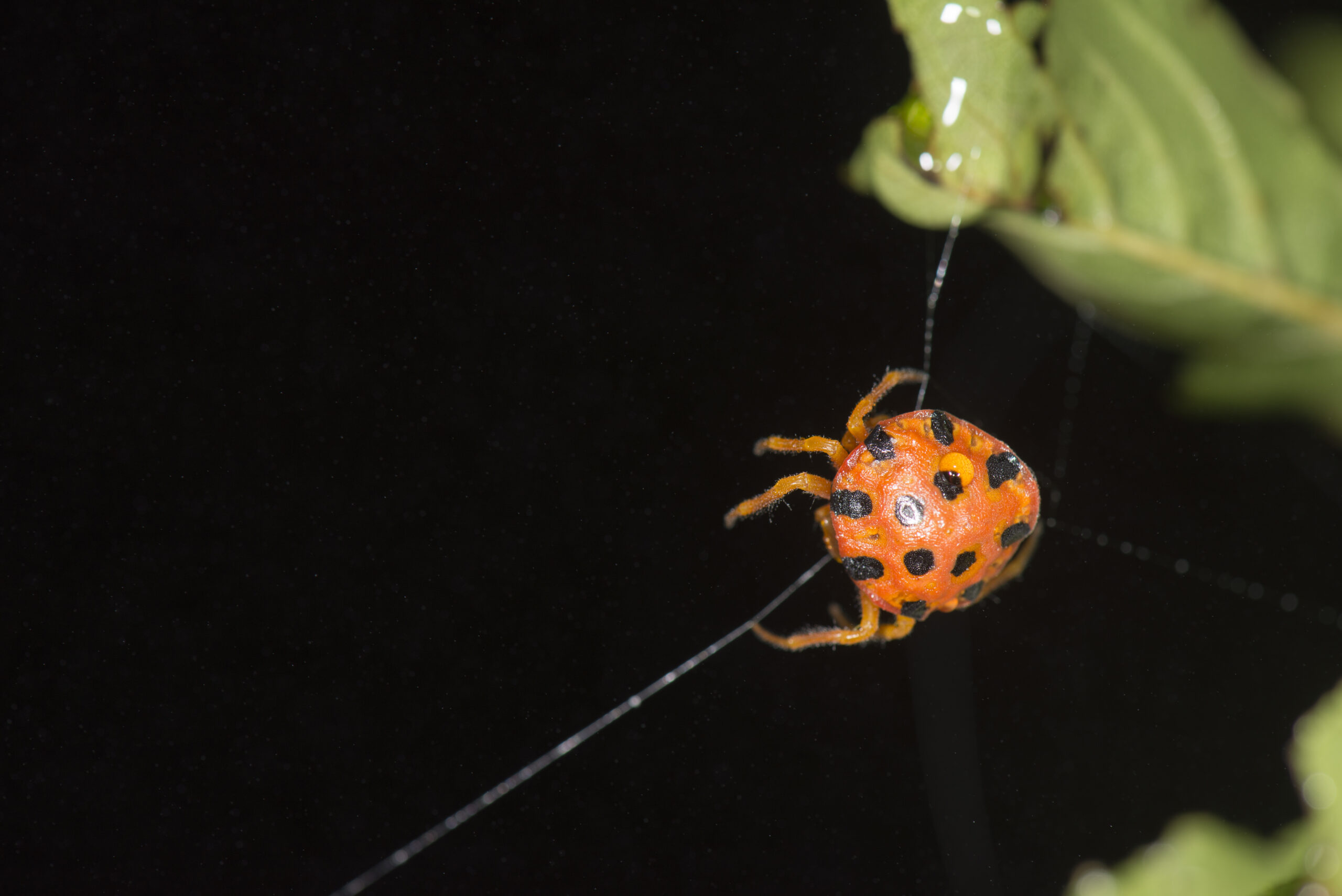
The Ladybird Mimic Spider takes its name from its incredible resemblance to a ladybird beetle. It has a round, red abdomen covered with black spots, mimicking the look of a ladybird perfectly. Found in Asia, this spider uses its mimicry to fool predators into thinking it’s harmless. Its striking colors not only serve as a defense mechanism but also make it a truly unique species among spiders. Its resemblance to the beloved beetle adds an extra layer of charm to this spectacular spider.
Spiny Orb-Weaver (Gasteracantha cancriformis)
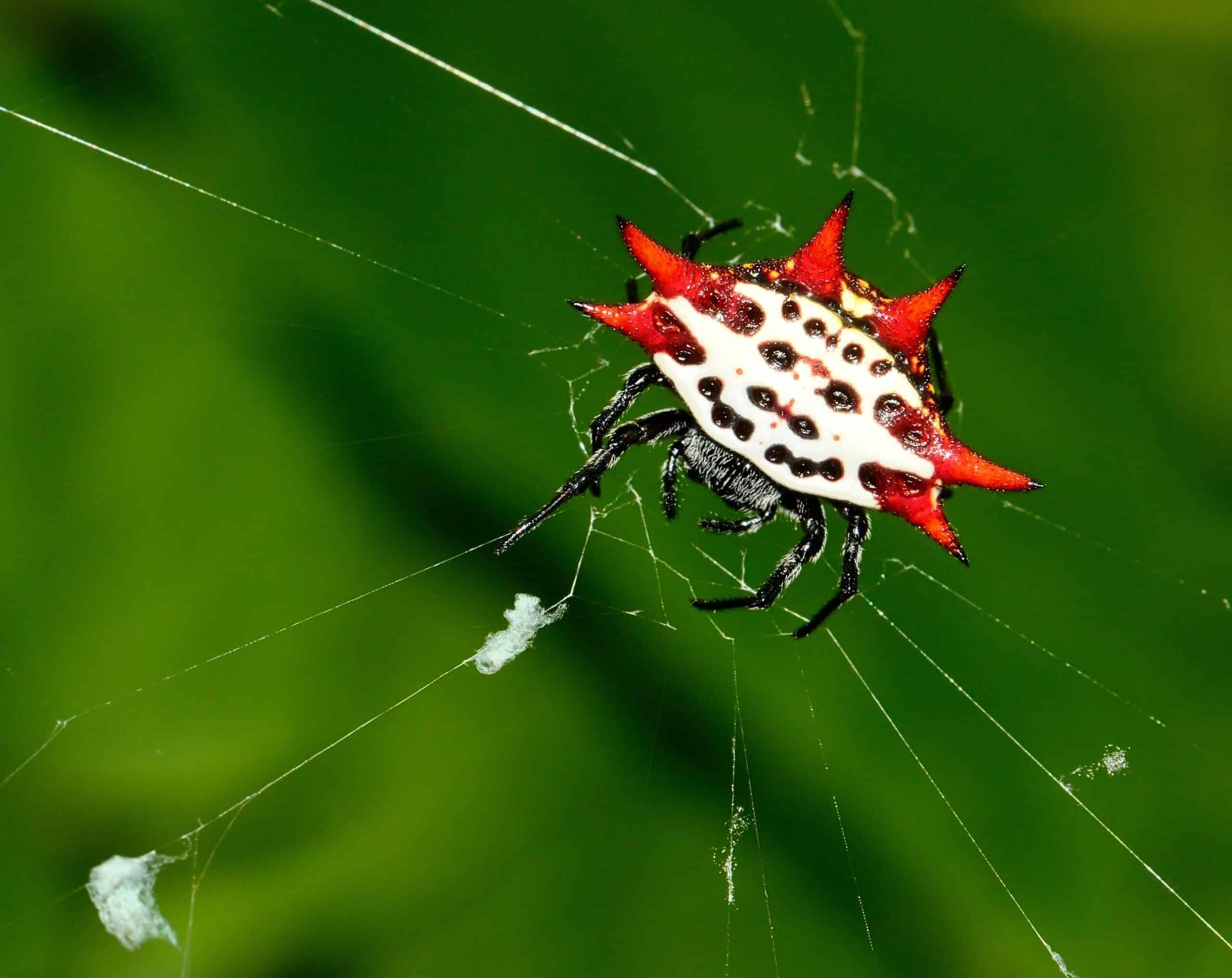
The Spiny Orb-Weaver is a small, brightly colored spider with a distinctive, spiked abdomen. Its body is typically white or yellow, with black spots and red spines that protrude from its sides. Found in gardens and forests, this spider spins orb-shaped webs to catch prey. Despite its fierce appearance, it is harmless to humans. Its unique shape and bold colors make it one of the most recognizable spiders in the world.
Red-Knee Tarantula (Brachypelma smithi)
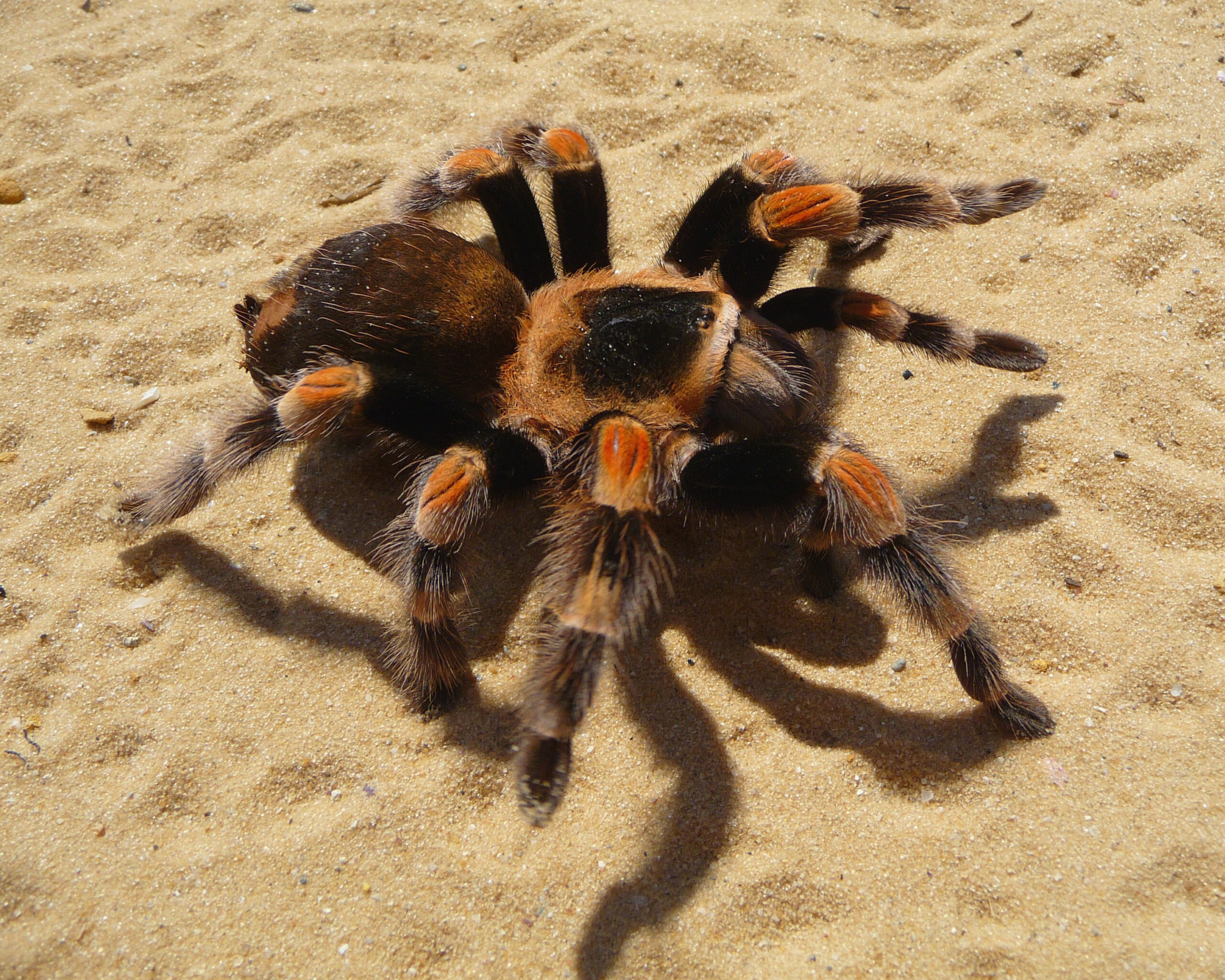
The Red-Knee Tarantula is known for its striking black body and bright red-orange knee joints. Native to Mexico, this tarantula is a popular pet due to its calm temperament. It has a slow growth rate but can live for decades in captivity. Its bold colors serve as a warning to predators, signaling that it may be venomous. Although its bite is not dangerous to humans, its vivid coloration makes it a standout species.
Zebra Jumping Spider (Salticus scenicus)
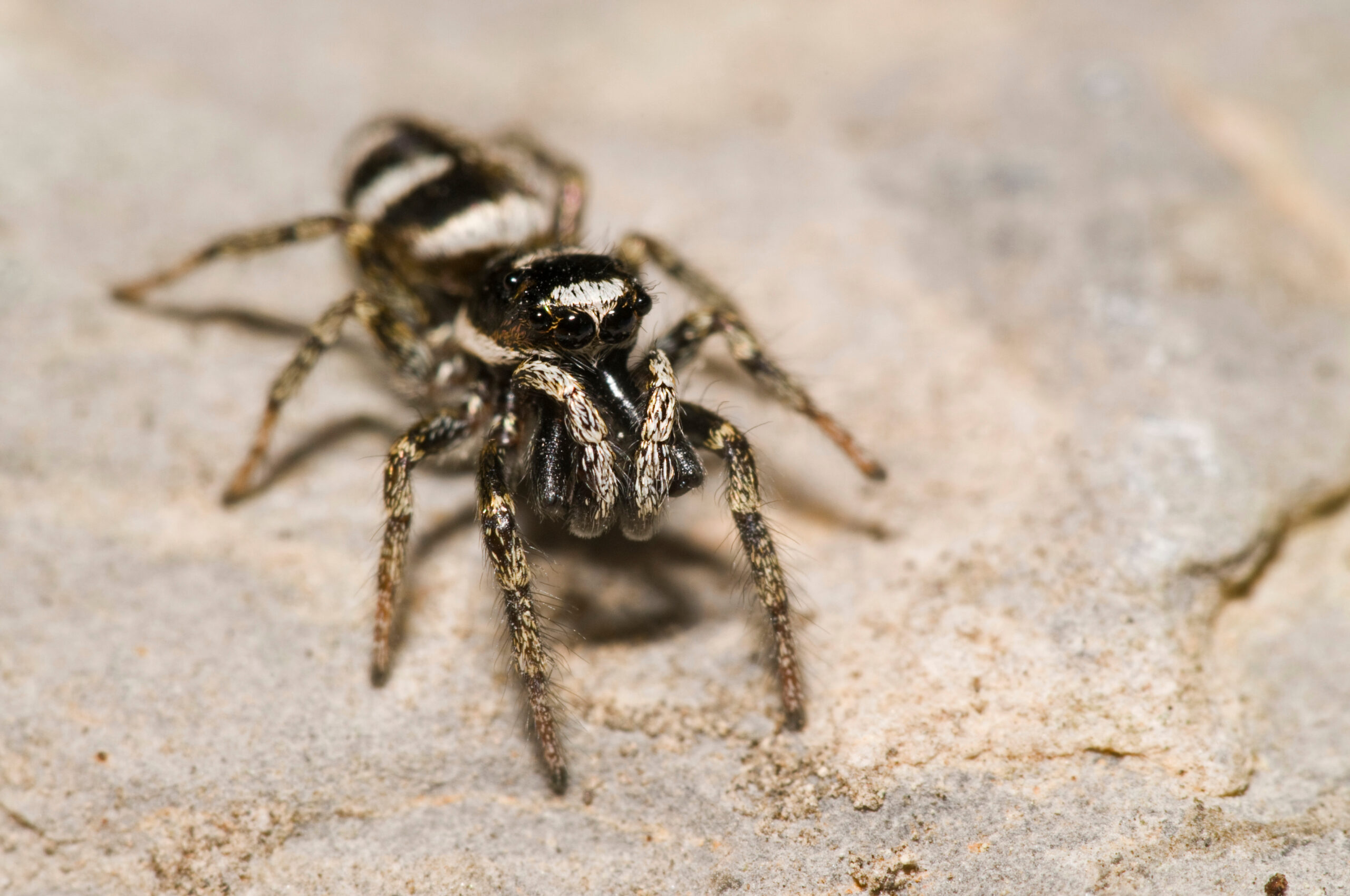
The Zebra Jumping Spider is a small, active spider with striking black and white stripes. It uses its keen eyesight and jumping ability to hunt down prey rather than spinning webs. Found in Europe and North America, it often hunts on walls, rocks, and plants. Its playful pattern mimics a zebra’s stripes, giving it a distinctive appearance. Despite its tiny size, this spider is full of energy and an expert hunter.
Green Huntsman Spider (Micrommata virescens)
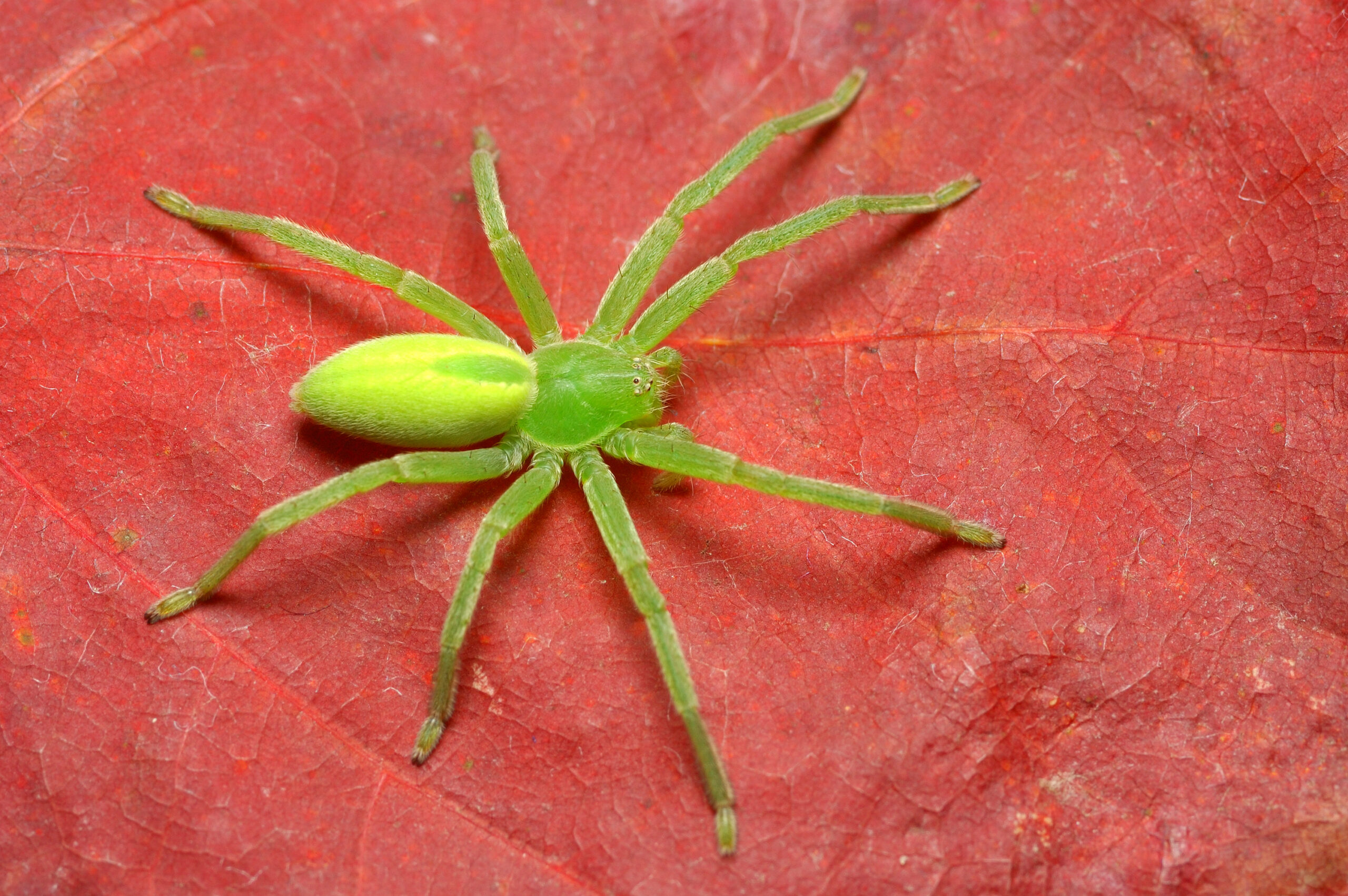
The Green Huntsman Spider is easily identifiable by its bright green body, which helps it blend into foliage. Found mainly in Europe, it hunts insects rather than trapping them in webs. Its vivid color allows it to camouflage itself perfectly in grass and leaves. Males of the species often have red markings on their face, adding to their striking appearance. This spider’s impressive speed and stealth make it a skilled predator.
Blue-Footed Baboon Tarantula (Monocentropus balfouri)
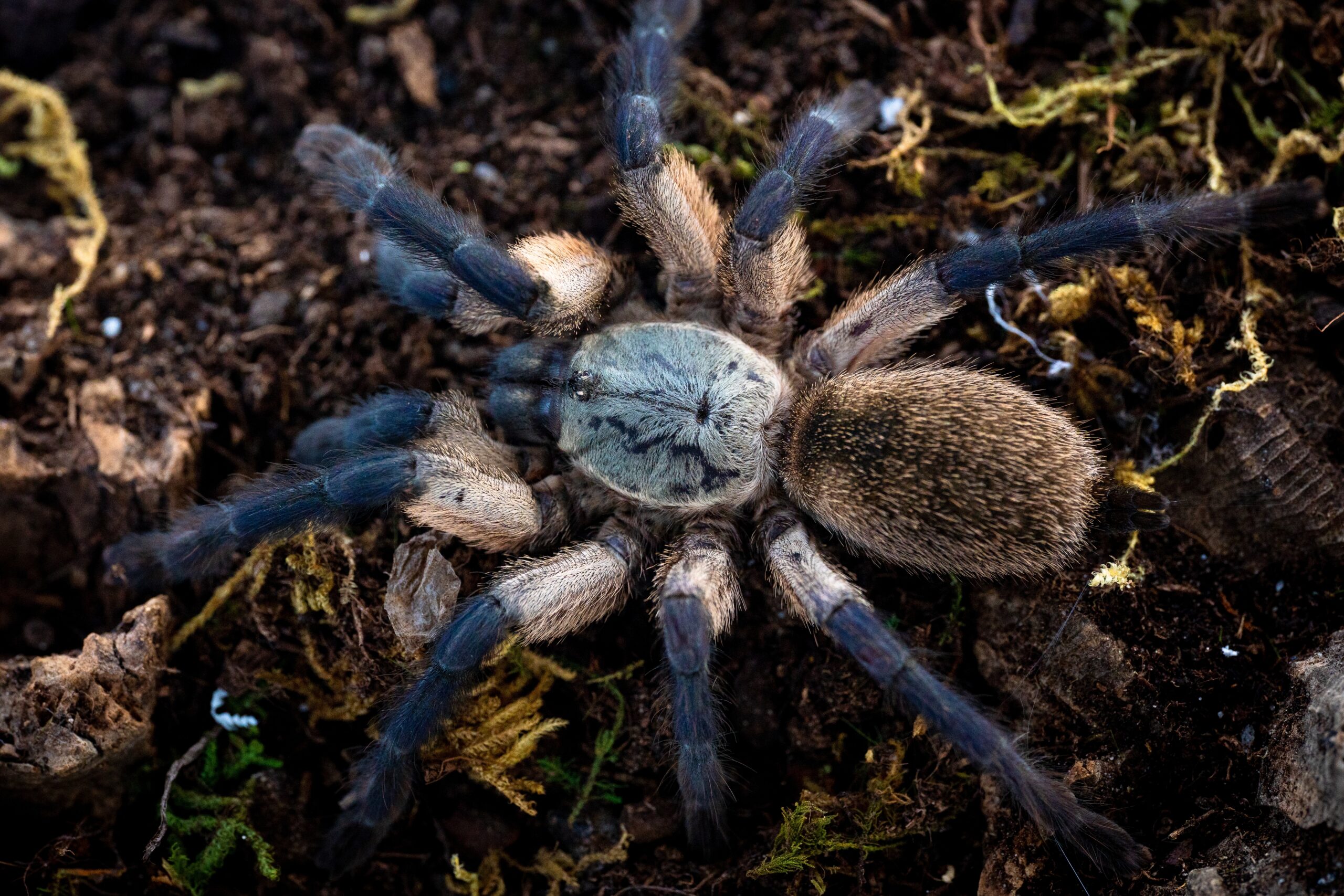
The Blue-Footed Baboon Tarantula is an eye-catching spider with striking blue legs. Found in the Socotra Archipelago, this species is highly sought after by collectors. Its body is usually a muted brown or gray, but its vibrant blue feet stand out against the rest of its body. Known for being aggressive, this tarantula is best admired from a distance. Its vivid color and bold behavior make it one of the most unique tarantulas in the world.
Spotted Orb-Weaver (Neoscona domiciliorum)
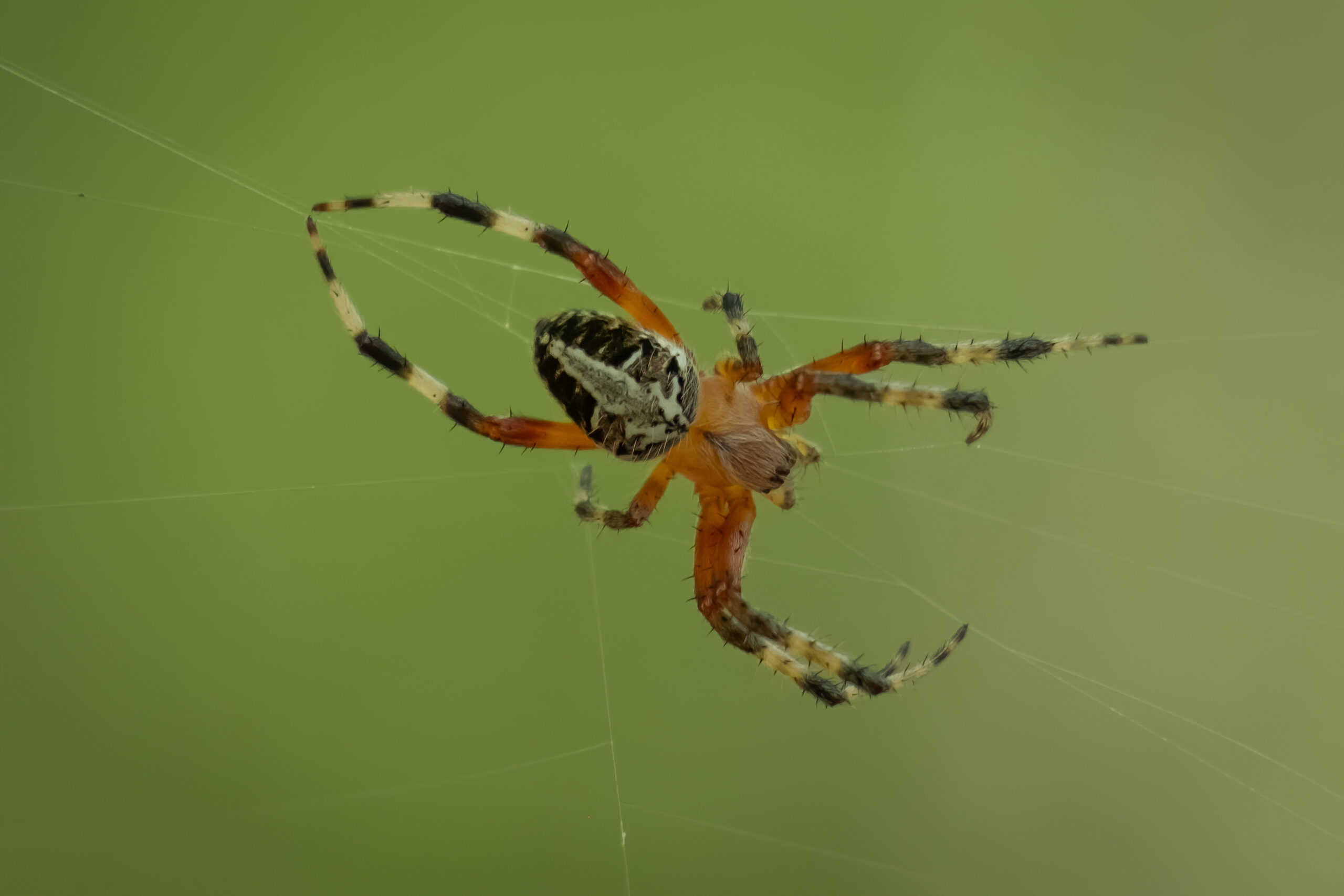
The Spotted Orb-Weaver has a tan or reddish body with white or yellow spots along its back. This spider spins large, intricate webs at night, often near houses or gardens. Found in the U.S., it’s most active during the warmer months. Its distinct, colorful spots make it easy to identify against the backdrop of its silky web. Despite its large size, it poses no threat to humans and is a masterful web spinner.
Pumpkin Patch Tarantula (Hapalopus sp. Colombia)
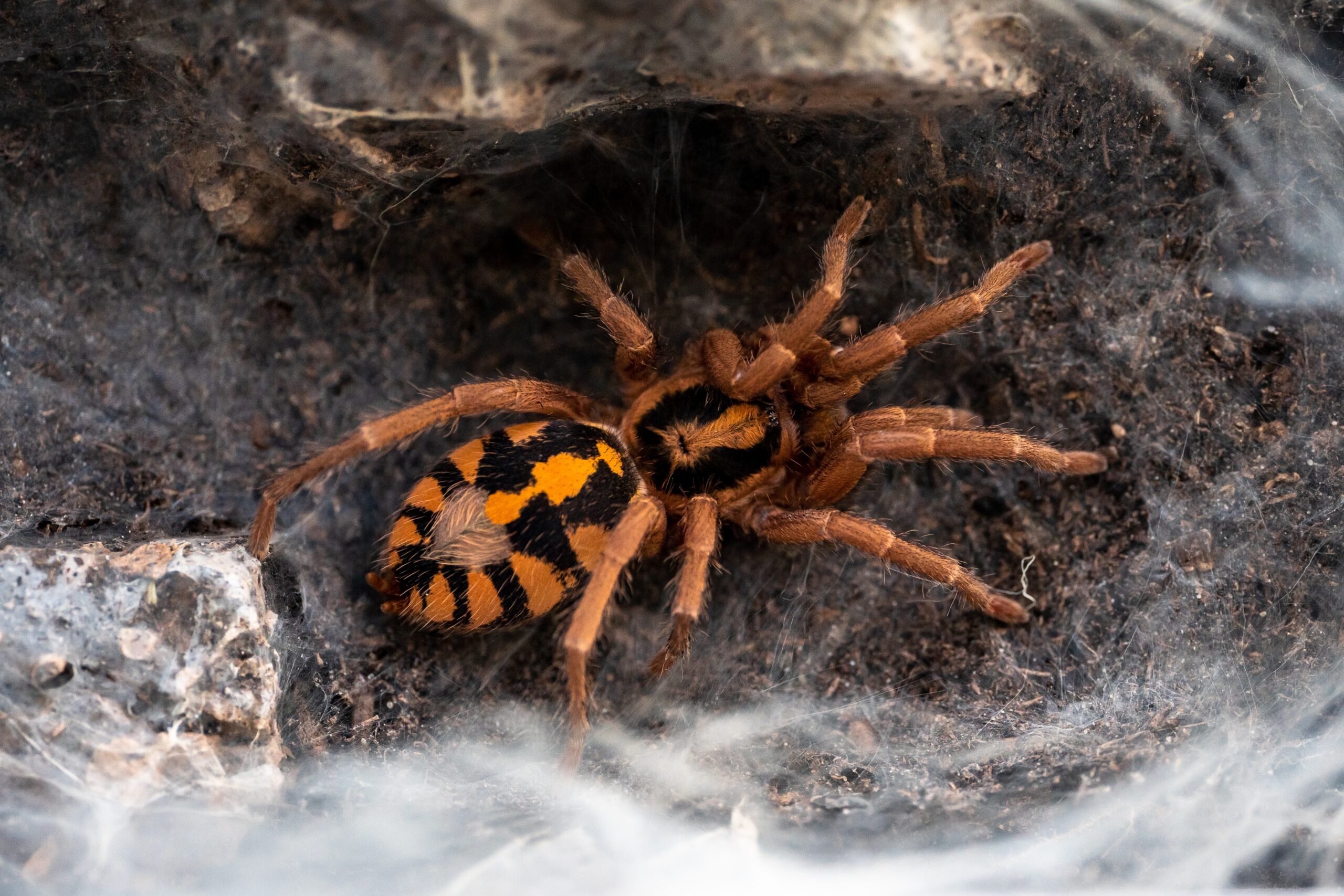
The Pumpkin Patch Tarantula is a small but vibrant species with bright orange markings that resemble tiny pumpkins on its abdomen. Native to Colombia, this tarantula thrives in humid environments, often burrowing in soft soils. Despite its small size, it’s highly active and grows quickly compared to other tarantulas. Its striking color pattern, with contrasting black and orange, makes it a popular choice among tarantula enthusiasts. Known for being relatively docile, it’s a fascinating species to observe in captivity.
Mirror Spider (Thwaitesia argentiopunctata)
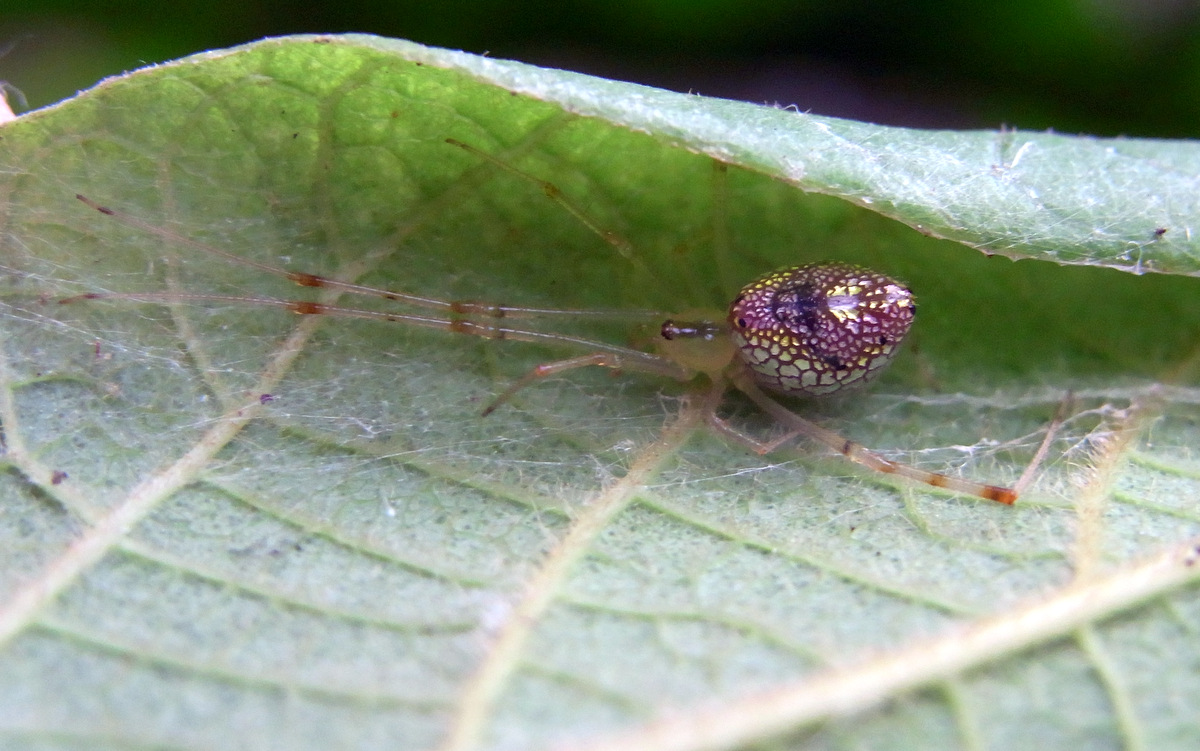
The Mirror Spider is a truly mesmerizing species with reflective, silver patches on its abdomen that shimmer like tiny mirrors. Found in Australia, these patches can change in size depending on the spider’s mood or surroundings, sometimes covering the entire abdomen or shrinking to small spots. Its translucent body, combined with these reflective scales, gives it a jewel-like appearance. This unique feature helps it blend into its environment, confusing both predators and prey. The Mirror Spider’s gleaming, almost metallic look makes it one of the most visually striking spiders in the natural world.
This article originally appeared on Rarest.org.
More from Rarest.org
8 Unsung Inventors Who Changed the World

Throughout history, countless inventions have shaped the world we live in today, making our lives easier, safer, and more enjoyable. Read More.
15 Rare Ferns with Intricate Leaf Patterns
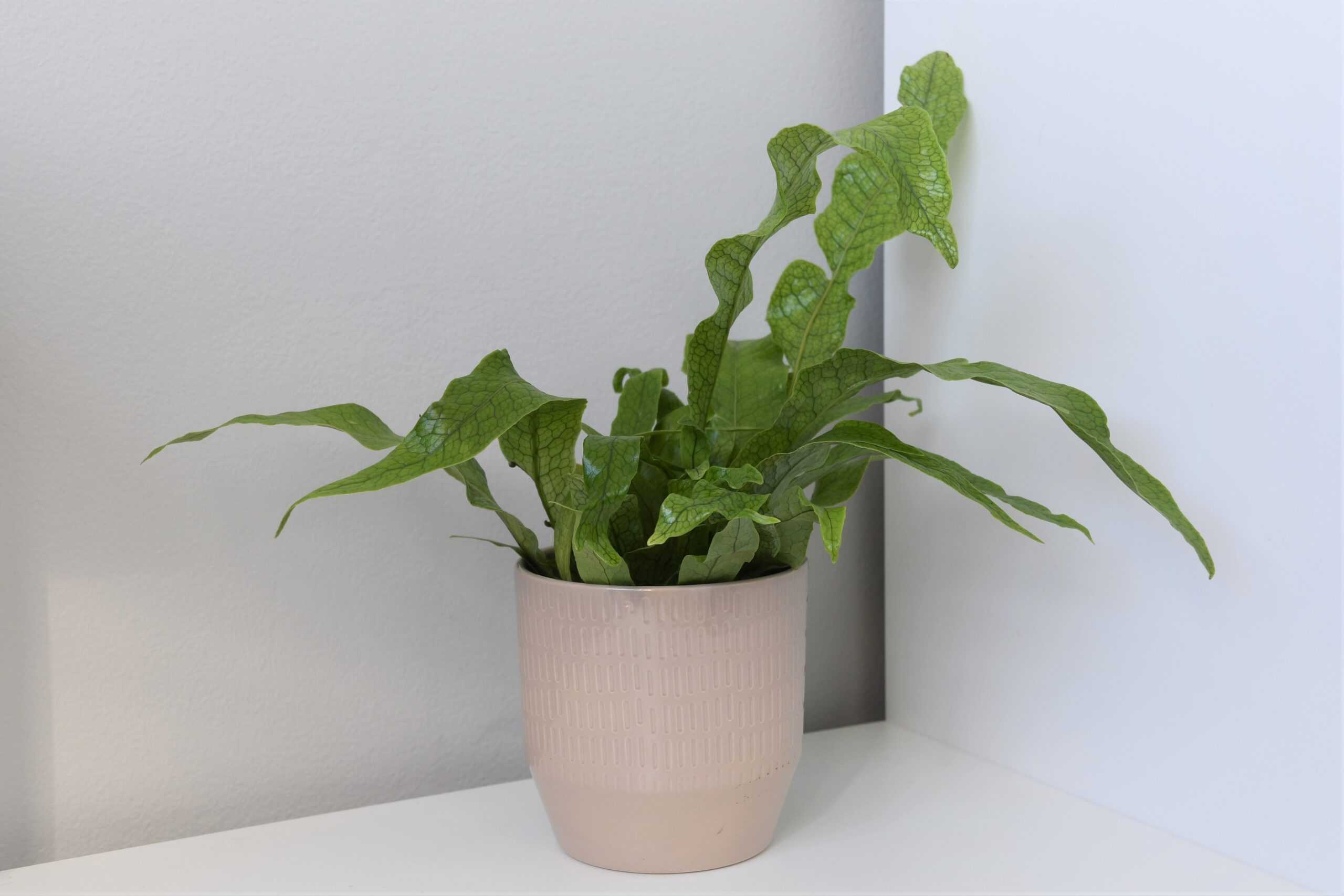
Ferns are some of the most fascinating plants, known for their lush greenery and delicate fronds that can add a touch of elegance to any space. Read More.
1966 Jefferson Nickel Value Guide

The 1966 Jefferson nickel is made of 75% copper and 25% nickel. The nickel was referred to as “war nickels” from mid-1942 to 1945. Read More.
